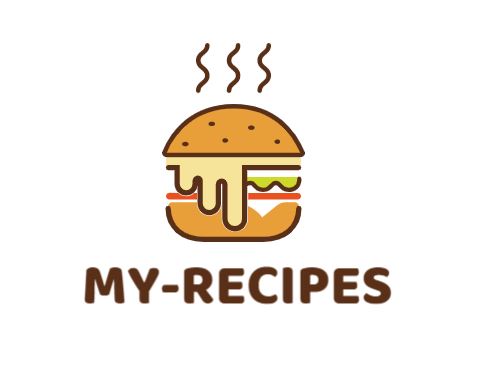Insurance is a financial tool that allows people to manage risks. It can also be used to protect the assets of individuals and businesses. There are various types of insurance, including health, auto, and homeowners. These types of insurance are designed to protect against specific risks. These policies can also be tailored to your particular needs. To find the best insurance policy for you, it is essential to understand the basics of these products.
Life insurance
Life insurance is a contract between you and an insurance company, which promises to pay a specified sum of money if you die prematurely. There are several types of life insurance, but the primary benefit is providing your loved ones with financial security. The death benefit is usually a lump sum, which your beneficiary can use for whatever purpose. It can help with bills, a mortgage, or even college tuition. The benefits of life insurance are numerous, and many people choose to purchase this type of coverage.
The death benefit on a life insurance policy is determined by the premium you pay. This amount can be spent on a recurring basis for the policy’s duration or paid only once. The policy’s term, or length of coverage, determines the number of premium payments you will have to make during the policy’s life.
There are a few different life insurance policies, and choosing the type best fits your needs is essential. Many policies require a medical exam, which helps the insurance provider determine if you are a risk. However, some guidelines do not require a medical exam, and they may be ideal for older individuals with a history of health issues.
There are two main types of life insurance policies: the simple and the complicated type. Each has different benefits, and the key to choosing the right style is considering the beneficiaries. Beneficiaries can be your spouse, children, parents, or anyone else who you think would benefit most from your death.
Health insurance
Health insurance is a type of insurance that pays a part of the costs of medical treatment. The risk of medical expenses is shared among many people. It is a great way to ensure you will not be financially ruined in an emergency. It is also essential for people to have insurance for their family members.
Government-run health insurance funds are one type of plan. The government pays some healthcare costs for low-income and disabled individuals. State and local governments administer these funds. In the United States, public health insurance programs include Medicaid and Medicare. These programs cover certain costs of health care and can be lifelong.
Insurers also provide health care services through a provider network. This network includes physicians and hospitals that are contracted with the insurer. These providers offer discounted rates to in-network members. However, it is essential to note that the in-network providers are not the only providers available. Some health insurance plans require preauthorization of services before a person can receive care from a physician or health care provider outside the network.
Non-ACA-compliant health plans are available in most states. However, they are not the best choice for standalone coverage. These plans are more suitable as supplemental coverage, which will pay a portion of your medical costs but aren’t a replacement for a comprehensive plan. Short-term health insurance is another option, but it is unsuitable for long-term use.
Homeowners Insurance
Homeowners insurance is a type of insurance that protects against damages to a homeowner’s property. It pays a percentage of the replacement value of the property if it is damaged. The coverage varies among insurers, and choosing a policy that provides enough coverage for the home’s replacement cost and living expenses is essential.
A homeowner’s insurance quote is a quick, easy way to find the right coverage for your needs. Knowing that the insurance company cannot turn you down based on your age, sex, marital status, or sexual orientation is essential. These factors are considered unacceptable by insurance companies and may result in a decline in coverage.
Homeowners insurance provides coverage for the home’s structure, the fixtures and appliances, and the contents of the house. In addition, it covers personal liability. Some policies provide coverage for other systems, such as an attached garage or tool shed. If you live in an earthquake-prone area, you may want to add umbrella liability coverage.
Homeowners’ insurance policies usually cover damages caused by fire, lightning, windstorm, hail, and vandalism. Some homeowners insurance policies also cover damage caused by falling objects and ice.
Auto insurance
You need to have proper auto insurance if you drive a vehicle. Liability insurance pays for bodily injury and death that may result from an accident. It can be bought by an individual or organization licensed to shop for insurance. The auto insurance policy has several parts. It begins with a declarations page that identifies your policy number and contains essential information about you. You will also find details about the vehicles covered by the policy. You may also find information on your loan lender, who will be listed as a loss payee.
The limits of the coverage are also necessary. The maximum payout the insurance company will make depends on the claim amount. You have to purchase the minimum required amounts of coverage, but most drivers purchase higher coverage limits. You can compare the costs of each option to ensure you’ll have enough money to pay for any damages or injuries caused by accident.
The premiums for different auto insurance policies vary depending on your age, location, driving record, and vehicle. It’s essential to get several quotes before making a decision. This way, you’ll be able to compare premiums, limits, and deductibles. It would help if you also compared financing costs between different quotes.
Limitations of liability insurance
When negotiating liability insurance, limits are a vital part of the agreement. These limits are generally the maximum amount the insurer will pay out for one individual’s claim and can vary across coverage types. Some limits apply only to specific items and situations. Other limits, called aggregate limits, apply to all claims in a given period.
Limitations of liability clauses are used in many contracts and often appear in professional service contracts. They limit the damages one party can pay in case of a claim, usually limiting it to the fees a client or professional services provider has paid. These clauses can cover negligence and latent defects and may exclude certain damages.
Limitations of liability insurance are not always beneficial. The cost of defending a claim may exceed the available insurance proceeds, and the legal fees can significantly reduce available insurance coverage. Sometimes, a single claim can wipe out a policy’s limits. A bad year can see multiple claims against a single policy, and the additional costs of defending such claims can quickly deplete a policy’s coverage.
Limitations of liability insurance can help protect the business owner. These clauses limit the amount of money a business can pay for a negligent act. Typically, limits apply to both foreseeable and unforeseeable losses, including damages that may result from infringement or disclosing confidential information. Some limitations apply to all claims during the contract period, and some only apply to specific actions.
Exclusions of property/casualty insurance
Property/casualty insurance coverage typically excludes losses caused by many perils and hazards. These include uninsurable risks and unpredictable events. Some insurance companies may also exclude certain types of property and locations. For example, an airplane or pet is typically not covered.
When choosing a policy, make sure to read the policy’s exclusions carefully. They will explain what types of losses are not covered. Property/casualty insurance policies usually list the exclusions in the policy. Exclusions, like personal property and personal liability, are listed after the main coverage sections. You may also find them in endorsements and conditions that apply to certain types of losses.
Some insurers limit the loss they will pay if a viral or bacterial infection occurs. In the same way, some insurers exclude losses resulting from pandemics or disease outbreaks. However, most policies do not exclude losses resulting from these events.
Many homeowners insurance policies exclude loss caused by earthquakes or other natural disasters. Likewise, they don’t cover theft after a disaster, a common cause of damage. Some homeowner insurance policies also exclude damage caused by rodents, animals, and insects. You might find coverage for these problems if you opt for a different approach, but you will probably have to pay for the cost.
The insurance market is changing. As cyber threats continue to rise, insurers seek to remove cyber coverage from standalone policies. To avoid this outcome, it’s essential to work with your broker or adviser early to negotiate the broadest range possible.

